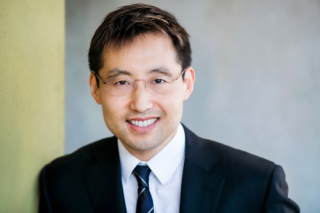
More Beauty Skin Care & Gorgeous Smiles Articles
Redefining Recovery: Comparing Korean vs. American Plastic Surgery Healing Times

Awake plastic surgery is a cutting-edge technique that redefines the post-surgery experience for plastic surgery patients. By using a local anesthetic rather than general anesthesia, doctors can offer their patients decreased postoperative pain, remarkably fast recovery times, and superior cosmetic results.
Dr. Kenneth Kim, medical director of Dream Medical Group in Los Angeles / Beverly Hills, brought this innovative technique from South Korea to the States. Today, awake surgery is gaining recognition in the US as a safer and more precise way to offer plastic surgery than traditional methods.
Patients experience fewer complications while recovering from awake plastic surgery
When patients are conscious during surgical procedures, plastic surgeons can expect fewer complications and better results than when patients are under general anesthesia. The key, according to Dr. Kim, is constant blood pressure.
Decreased blood pressure is an inevitable side effect of general anesthesia. Of course, plastic surgeons check carefully for bleeding before closing a surgery, but as patients awaken, their blood pressure returns to normal. The increased blood flow makes leaking arteries common occurrences.
Sometimes, additional surgical procedures are required to stop post-surgical bleeding, but in many cases, the bleeding goes unnoticed for hours or days. After plastic surgery, this bleeding often causes bruising and scar tissue to develop.
“Just like burns harden skin on the outside of our body, bleeding causes scar tissue that hardens tissue on the inside,” Dr. Kim says. “This internal scar formation happens when a surgical wound triggers white blood cells to activate, causing inflammation.”
Internal scarring is all too common after plastic surgeries when patients are completely sedated. In fact, capsular contracture, also known as hardening of the breast, occurs in 10.6% of breast augmentation surgeries, according to the National Center for Biotechnology Information.
During awake procedures, surgeons numb the area with local anesthesia, which significantly reduces the likelihood of inflammation and bruising. “Your blood pressure won’t fluctuate before, during, or after an awake procedure,” Dr. Kim explains. “If blood vessels are properly sealed before closure, they will remain sealed as you recover.”
Accurate targeting during awake plastic surgery eliminates pain and speeds healing
Awake surgery utilizing local anesthetics enables plastic surgeons to achieve pinpoint accuracy. Though the delicate procedure itself takes much longer than typical plastic surgery, the recovery is far shorter because doctors avoid damaging nearby tissues. Due to the use of local anesthesia, plastic surgeons performing awake surgery must learn to achieve extremely precise work in close quarters.
“When doctors rely on general anesthesia, they can perform the surgery as if speeding down an eight-lane highway,” Dr. Kim says. “I compare awake surgery to driving a narrow mountain road. Speed and shortcuts are not an option; however, we achieve an entirely new level of precision. Although awake surgery takes longer, it results in less damage to surrounding tissue. After their procedures, our patients experience minimal discomfort and rapid recoveries.”
Pain is a key consideration for any patient during and after surgery, and this new level of precision drastically reduces pain. When patients are under general anesthesia, their body still perceives pain. Fully sedating patients prevents their brains from processing the pain, but the nerves at the site are fully activated.
Dr. Kim challenges the long-held belief that the body is numb to pain while under general anesthesia. “Your body secretes a deluge of stress chemicals as you undergo surgery,” he remarks. “Your heart rate increases, your blood pressure rises, and your blood vessels narrow. When surgeons make direct incisions into your nerves, those nerves become extremely sensitive and stimulated. You won’t remember the pain, but you will have to process it when you awaken.”
Post-operative pain is a prominent issue in the medical community. Overprescribing legal pain medication has resulted in an opioid epidemic costing the United States over $1.5 trillion annually and claiming over a million lives. Medication for post-surgical pain is extremely challenging, as the Centers for Disease Control reports that 25% of those given long-term opioid prescriptions develop addictions.
By contrast, during awake surgery, doctors use a local anesthetic to numb nerves at the surgical site, which prevents the nerves from feeling pain. Because patients report zero discomfort during awake surgery, Dr. Kim frequently observes them engaging in everyday activities such as reading emails, making phone calls, or strolling around the office during surgery breaks.
“During awake surgery, my patients are mentally alert and speaking with me,” Dr. Kim adds. “They’re clearly not in any pain or discomfort.”
According to Dr. Kim, his surgical patients typically only need over-the-counter pain relievers like ibuprofen or acetaminophen. Furthermore, while conventional breast augmentations require patients to anticipate soreness for at least a week, Dr. Kim’s patients have full and comfortable use of their arms immediately after an awake breast augmentation.
“After awake surgery, my patients walk to their cars and even go out to dinner that night,” concludes Dr. Kim. “The rapid and pain-free recovery available through awake surgery is something I think everyone should know about. We used to have no idea what it was like for the body to be under anesthesia, but now that we know the part pain plays in recovery and how to reduce pain with targeted precision, we can empower patients to make safer and more informed decisions.”
Other Articles You May Find of Interest...
- Longevity Supplements: Improving Medical Practitioner Care & Functional Medicine in 2024
- Rejuvenate Your Skin: How Cutting-Edge Science Transforms Personalized Skincare
- Five Options for an Improved Neck Contour
- Can You Benefit From Braces?
- Exploring the Safety and Effectiveness of CoolSculpting Treatments
- How to Prepare for Your Visit to the Dermatologist
- What’s the Right Age To Have Cosmetic Surgery?

















